Storing Breastmilk Safely with Lara Vu, MPH, CLES @milaskeeper
- How to safely store breastmilk and what employers are obligated to do for pumping moms
- Which recipes you can make with breastmilk and how food storage guidelines differ for them
- Why Lara created the longest lasting breastmilk storage receptacle and how it works

LISTEN TO THIS EPISODE
Episode Description
If you're a pumping mom, where do you store your expressed milk? If you're a working pumping mom and you go to an office or worksite, this is a major issue. The lunchroom refrigerator next to Bob's bologna sandwich? Laura Vu, MPH, CLES started her company Mila's Keeper to create an attractive, effective, easy-to-use solution for longer, safe breastmilk storage. In this episode she's sharing basic tips about safe breastmilk storage for pumping moms.
About the Guest
- Lara Vu is a mom of 2 and breastfeeding educator who worked for UNICEF for 12 years
- She saw firsthand the struggles of breastfeeding moms both at the US and abroad
- Lara is the founder of Mila’s Keeper, which makes products to keep breastmilk cold for up to 20 hours
Other Episode Related to this Topic
Links from Episode
- Mila’s Keeper Website https://milaskeeper.com/
- Mila’s Keeper on Instagram https://www.instagram.com/milaskeeper

Latest Episodes
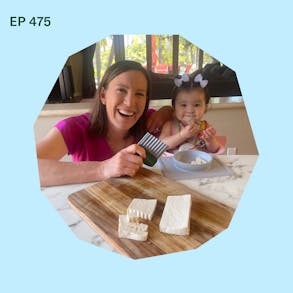
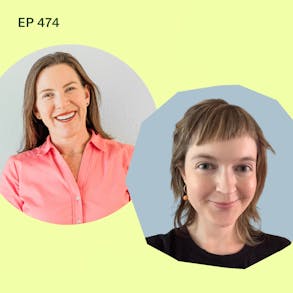

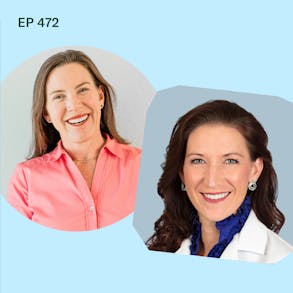
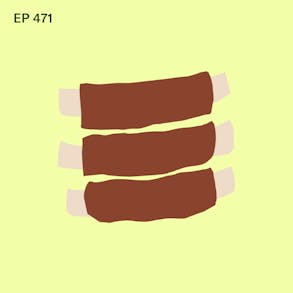
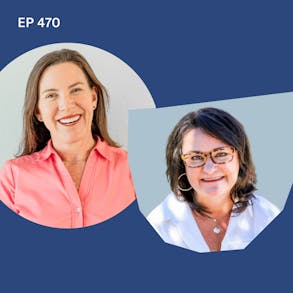
Katie Ferraro (1s):
So, which foods are not safe for your baby to eat? You guys know I'm usually all about sharing all of the foods that your baby can safely eat, but there are definitely some foods that we steer clear of when starting solid foods. I have a free feeding guide called 15 Foods Never to Feed. That will help you recognize which foods aren't safe. Now most of the foods inside the 15 Foods Never to Feed Guide we avoid because they're choking hazards. But I'm providing you with tips on how to modify those foods so they are safe for your baby to eat. You can download the 15 Foods Never to Feed free feeding guide by going to babyledweaning.co/resources.
Katie Ferraro (41s):
Again, that's s babyledweaning.co/resources to download your free feeding guide 15 Foods Never to Feed with the modification tips on how to make those foods safer. Happy Feeding! Anyone have a picky eater? A mom who signed up for my workshop this week said I wasn't brave enough to try baby led weaning with my firstborn, who's now a picky eater. Second baby turns six months soon I want to provide him with the resources to do baby led weaning. If you are looking for those resources too, they're all inside of my free online video workshop called Baby Led Weaning for Beginners. We're gonna cut through the confusion and set the record straight about starting solid foods safely so you can finally stop hunting and pecking all around the internet.
Katie Ferraro (1m 22s):
For your answers, sign up for this week's workshop times at babyledweaning.co. I'll see you there and produce is porous So If you're thoroughly washing it if you set it in a product that has bleach or detergents in it, there is of course the risk of becoming ill, right? Because the fruits and the vegetables can still absorb that soap and some of the other disinfectants. Why we never use soap or bleach or sanitizer, alcohol disinfectant, or really any other chemicals to wash produce. I'm Katie Ferraro, Registered dietitian, college nutrition professor and mom of seven specializing in infant feeding and baby led weaning. But it wasn't all that long ago that I struggled tremendously while trying to spoonfeed my oldest baby.
Katie Ferraro (2m 5s):
Fast forward to my next pregnancies, quadruplets, and then twins. And we decided to go all in on baby led weaning, and those babies ate over 100 real wholesome foods before turning one. No force feeding by spoon, no short order cooking, no mealtime battles with picky eaters. Baby led weaning was such a transformational experience that I shifted the entire emphasis of my nutrition career. And I focus exclusively now on helping parents, caregivers and healthcare providers give their babies a safe start to solid foods using baby led weaning. I created the Baby Led Weaning with Katie Ferraro podcast to give you simple, actionable, proven strategies that you can use right now to master baby led weaning.
Katie Ferraro (2m 49s):
If you're a new parent or a seasoned veteran looking to learn more about this evidence-based approach to raising independent eaters and starting solid food safely, you are in the right place. Let's get started and happy feeding. You are a good mom or a good dad or a good grandparent or caregiver, and you're spending all of this time helping your baby learn how to eat real food. And some of the foods that you're offering are very likely fresh produce like fruits and vegetables. But when it comes to your baby's safety, should you be using a produce wash? In today's episode, we're talking all about produce washes are what they are, what they claim to do, whether or not they're any better than good old fashioned running water and elbow grease.
Katie Ferraro (3m 32s):
And I like to start each of these mini training episodes with a baby led weaning tip of the day. And today's tip is to be particularly vigilant when it comes to washing your melons. So melons, thinking honeydew or cantaloupe or watermelon. When you think of melons as a class of produce that is to be washed before you eat it. The reason is because melons are ripe for foodborne illness. That was a terrible pun, sorry. But melons grow on the ground, right? It means that the melons can very easily come into contact with animal feces and other runoff that could contain potentially harmful pathogens. And so when you wash your melon, what you do is you remove any of the potentially harmful pathogens from the outside of the rind.
Katie Ferraro (4m 13s):
Now of course, your baby's not eating the rind, but if you don't wash your melons, and we've seen this recently, melons have been the culprit in a few foodborne illnesses as of late. If you don't wash them, what happens is the pathogens from the outside, when you take your knife, you're transferring the pathogens from the outside, the rind right through the middle of that fruit all the way down the inside of it and out the other side. And when you open the melon up, you now have the potentially harmful pathogens on the inside of the fruit. So the rind is the built-in protective mechanism, but we don't wanna transfer the bad stuff from the outside through to the inside where it's supposed to be nice and clean and essentially sterile. So If. You can rinse your melons under running water using your hands, and some friction.
Katie Ferraro (4m 57s):
You can remove the potentially harmful pathogens. And then when you cut through the melon, it will be perfectly safe for your baby to eat. And I want you guys to hang tight till the end of this episode 'cause we're also gonna be sharing some ideas about how some of the produce washes are actually harmful for your baby. So let's get started talking about produce washes. First off, what is a produce wash? Okay, so according to the Center for Food Safety, a produce wash is not surprisingly intended to wash vegetables in many cases can use chemical rinses and other treatments. Okay? And produce washes purport to work by saying that they're going to get your food cleaner, you're basically gonna make it be rid of bacteria and chemicals better than water will.
Katie Ferraro (5m 38s):
Okay? So the way that the produce washes generally work is they say like, okay, before you chop your fruits or your vegetables, you would, you know, spray the harder produce, rub it for 20 to 30 seconds, rinse it, and then dry it. And you're buying a product at the store or online that again purports to reduce the potentially harmful things in your fruit more so than water would. Okay? And the idea is to make it easier that these washes would make it easier to lift the bacteria and the other residue up. Okay? Now, are they better than good old fashioned friction and water? The Center for Food Safety states that these products are just as good as ordinary tap water at cleaning produce.
Katie Ferraro (6m 20s):
And in fact, studies have not demonstrated that produce washes work any better than using tap or distilled water to wash your produce. Okay? It can actually be harmful to use some of those produce washes because they can either add contaminants and in some cases remove nutrients from the produce. Foodsafety.gov also recommends against the use of produce washes. They advise as most feeding professionals, dietitian would as well, that you would just wash your produce under running water without the use of soap bleach or store bought produce washes. Okay? Before you are gonna peel the food or you know, offer it to your baby, you wanna rinse it if you can. And you could use, if you needed to add an implement of sorts to this situation, you could just use a clean produce brush to scrub your solids, especially some of those tougher ones.
Katie Ferraro (7m 8s):
I know like for cantaloupe and because they're oftentimes implicated in some of these foodborne illness outbreaks, whenever I'm prepping melons for a baby, I'm always going to use my produce brush to scrub it just with water a little bit, do it a little bit better job than I could do with my own hands. But you never want to use soap or bleach or sanitizer, alcohol, disinfectants, or any other chemicals to wash your produce. Okay? It also hasn't been demonstrated that using, sometimes people will recommend home remedies like salt or pepper or vinegar, lemon juice or lime juice to effectively remove bacteria. Hey, we're gonna take a quick break, but I'll be right back.
Katie Ferraro (9m 7s):
The Centers for Disease Control recommend that you wash or scrub your fruits and vegetables under running water, even if you plan on not eating the peel. So sometimes I think I'm, you know, I'm in a hurry, I'm like, oh, I'm gonna get lazy about washing this avocado. Now I'm not gonna ever offer avocado peel to a baby. And you see that sometimes, unfortunately on other social media accounts, you'll see a baby being given a piece of avocado with a part of the peel still on it and they say, oh, it helps the baby with the grip. Well what it does is offer a potentially harmful choking hazard, IE the peel of the avocado to the baby. You don't eat avocado peels.
Katie Ferraro (9m 47s):
Babies don't need to eat avocado peels. Babies can learn how to pick up slippery foods like avocado. You don't keep the peel on them. And the same goes for banana as well. This is unfortunately a practice that's gotten popular also because of social media. It's what I call the banana lipstick. Someone will offer a baby a half of a banana, but the bottom quarter of the banana has the peel still on and and they say, oh, it's easier for the baby to pick up. Guess what? Your baby can learn how to pick up strips of banana that are shaped about the size of your adult pinky finger. You don't eat a banana peel. Babies should not be offered banana peels as well. We know of a baby who followed one of these accounts and actually choked on the banana peel. Now, fortunately, the baby didn't die, but banana peels are a huge choking hazard.
Katie Ferraro (10m 28s):
So you're not making your baby's life easier by offering them peels of fruits and vegetables that you normally would not eat and your older baby. And we get into this in our program teaching about when it's okay to start offering certain fruits with peels on them. That comes later when your baby is much more advanced as far as being able to handle multiple textures and has had ample experience doing single textured foods. But when in doubt, leave it out. And especially early on in starting solid foods in our program, that's phase one, the first eight weeks of Baby Led Weaning, we do not offer any peels to babies. Now what about these produce washes? You've probably seen them in the produce section at your grocery store or maybe you've seen ads for them. The second the internet finds out you have a baby, they're totally focused on selling you things.
Katie Ferraro (11m 11s):
Of course that will make you think that it's going to be safer for your baby. I've looked at a couple of the different, probably the three most popular ones and they range in price. I was dying because one of them was $45 for like three pounds of this cleaner claiming that it would, you know, you can experience the revolution of cleaner, safer, longer lasting fruit and veggies. And that this product had absolutely no data to support any of its claims. I think a lot of these websites employ a fearmongering approach. They list all these chemicals that you can't pronounce and then claim that their products remove them again with absolutely no data to support the idea that these are making your products any safer. There's nothing wrong with good old fashioned water and friction and running your fruits and vegetables underneath the faucet for a little bit to remove any of the potentially harmful pathogens.
Katie Ferraro (12m 0s):
Some of the products that you see on the market online on Amazon, they claim to eliminate like 99.9% of dangerous germs. And then the list all the dangerous germs that you heard of and you hear of in the news. But please also know that water and friction has been shown to do that as well. So I know that you don't need one more thing to buy for your baby. And my suggestion as a Registered dietitian is that you can steer clear of produce washes for your baby, stick to the good old fashioned running water and friction, use a produce brush for some of the tougher things as the cantaloupe comes to mind. And please don't offer your baby foods with peels like banana peel or avocado peel on them. If you don't eat the peel of that product, your baby doesn't need to do it either. And if you're not sure if you should remove the peel, I always say, when in doubt, leave it out.
Katie Ferraro (12m 44s):
I hope you found this quick episode helpful when it comes to deciding whether or not you wanna buy a produce wash, I'll link to some of the studies and the resources and I'll even put a few of the wacko products out there on the Shownotes page for this episode if you want to check it out. That's all at BLWpodcast.com/405. And thank you so much for listening. Like a lot of moms out there, I will totally admit I am quite Type A. I am a total task master and one of my weekly work tasks is to review the feedback forms that are new students in my program, which is called Baby Led Weaning with Katie Ferraro that they leave for us.
Katie Ferraro (13m 24s):
So basically this form asks a lot of questions about you and your baby and your baby's feeding and medical history, any concerns that you might have or fears about starting solid foods. And all of this data helps me when I'm answering parent questions inside of our weekly live office hours so I can then tailor my response to your particular baby and situation, right? Because it's not a one size fits all approach when it comes to what your baby's eating, right? Because maybe your baby has an egg allergy or another mom in the program. She might really be struggling with how to make meat safe 'cause she doesn't like to cook. So this week on the form, there's a new mom named Janine and she wrote, and this is her quote, "I researched a lot on the internet and I have a lot of books. I saw a lot of other Baby Led Weaning programs.
Katie Ferraro (14m 4s):
But in the end, this is the one that I realized is what I'm really looking for as a new mom. I love that Katie's program has a community and that there are videos for everything you need to know and how to make the foods. And what I love the most is that there's already a meal plan ready". And this just like stopped my heart because this is exactly why I created the Baby Led Weaning with Katie Ferraro program. I wanted to literally put everything that you need to know about starting solid food safely in one place with a super easy to follow 20 full weeks meal plan. Okay, there's 20 weeks 'cause it's five foods a week. I want your baby to get to those a 100 new foods before they turn one. 'cause I also know you have a lot going on as a new mom and hunting and pecking all over the internet to try to figure out what am I gonna feed this baby That is not the solution.
Katie Ferraro (14m 53s):
So If, you want to check out the Baby Led Weaning with Katie Ferraro program. I would be honored to work with you and your baby. You can head to babyledweaning.co to get started and hopefully I'll be reading your feedback soon too.
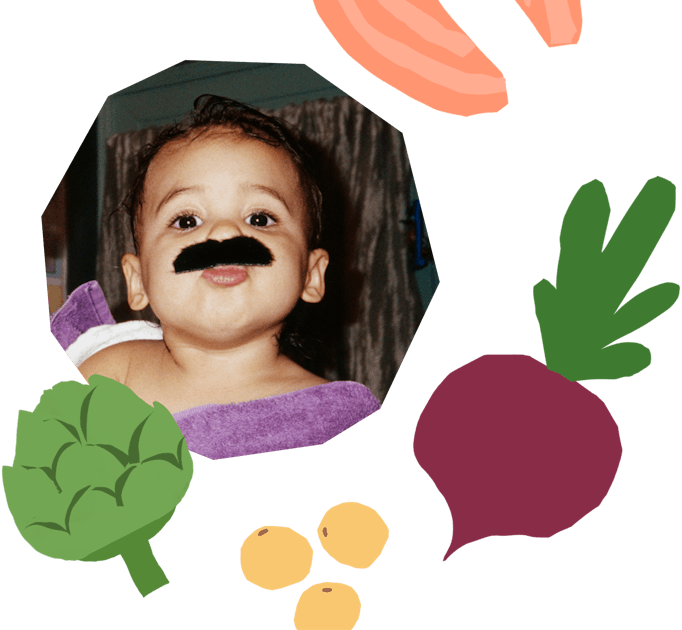
The Program Baby-Led Weaning with Katie Ferraro
A digital course & step-by-step guide for starting solid foods safely with baby-led weaning
 EXPERT-LED, PROVEN APPROACH TO EATING REAL FOOD
EXPERT-LED, PROVEN APPROACH TO EATING REAL FOOD CONCISE VIDEO TRAININGS TO MASTER BABY-LED WEANING
CONCISE VIDEO TRAININGS TO MASTER BABY-LED WEANING 100 FIRST FOODS DAILY MEAL PLAN WITH FOOD PREP VIDEOS
100 FIRST FOODS DAILY MEAL PLAN WITH FOOD PREP VIDEOS
Baby-Led Weaning for Beginners Free Workshop
Is your baby ready to start solid foods, but you’re not sure what to do? Register for this free online video workshop and learn how to give your baby a safe start to solid foods using baby-led weaning. Everyone on this free training receives a copy of Katie’s original 100 FIRST FOODS™ list. You can take this workshop right now, later today when your baby naps, or tomorrow…whatever works for you!
Get baby-led weaning recipes and tips delivered right to your email inbox.